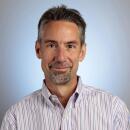Trump’s wife Melania faces questions about her own immigration history

- Share via
Reporting from WASHINGTON — After a campaign full of fierce vows to stop foreigners from entering the U.S. illegally, Donald Trump is now facing an immigration controversy close to home.
Trump’s wife, Melania, who was born in what is now Slovenia and worked as a New York fashion model in the mid-1990s, has held herself up as an example of an immigrant who came to the U.S. legally and followed the law. She said she applied for a green card and eventually obtained U.S. citizenship.
But the timing of her early photo shoots and her own accounts of her travels have created questions about when she first entered the U.S. and whether she was legally permitted to work during her earliest days here.

Watch Melania Trump’s speech on night one of the Republican National Convention >>
Her original modeling agent in the U.S., Paolo Zampolli, said Thursday that he recruited her to come to New York from Milan and helped her obtain an H1-B visa, which allowed her to stay in the U.S. for three years and do modeling work.
“She never worked illegally for our agency. She always worked with a visa,” Zampolli said in a phone interview. “It’s very easy, very standard, to get a model visa, because she had experience in Europe. Trust me, I don’t want to be lying about this. She had a visa.”
The questions about Melania Trump’s immigration history are particularly sensitive for Donald Trump, who has made attacks on immigrants a touchstone of his presidential campaign. Trump has characterized Mexican immigrants as rapists, vowed to keep out Muslims and promised to build a wall along the U.S.-Mexican border.
The Trump campaign has not provided details of Melania’s visa history or released her records. On Thursday, following a report on Politico, she released a statement saying she had always followed the rules. She said she obtained a green card in 2001 and became a U.S. citizen in 2006.
“Let me set the record straight: I have at all times been in full compliance with the immigration laws of this country,” she said on Twitter, after questions about her history were raised in news reports. “Any allegation to the contrary is simply untrue.”
Questions about her immigration status surfaced in the wake of the publication of nude photos taken in New York in 1995, when then-Melania Knauss was 25.
In interviews, Melania Trump has said she first came to the U.S. in 1996, and that she periodically traveled back to Slovenia in order to stay in compliance with visa rules.
“I followed the law the way it’s supposed to be,” she said on MSNBC in February. “I never thought to stay here without papers. I had a visa. I traveled every few months back to the country to Slovenia, to stamp the visa.”
“I came back, I applied for the green card,” she said. “I applied for the citizenship later on.… So I went by the system.”
The statements raise two issues. First, the photographs suggest she was working in the U.S. earlier than she had previously claimed.
Second, if Melania Trump had held an H1-B visa used for working in the U.S., she would have been allowed to stay for three years and would not have needed to return to her home country, immigration experts said.
Her description of going back and forth from New York and Slovenia is more consistent with a B-1 tourist visa. But such a visa doesn’t permit the person to work, David Leopold, an immigration lawyer in Cleveland, said in a telephone interview.
It is technically fraudulent for a traveler to tell a U.S. immigration officer that a trip is for tourism if he or she is really coming for a job, Leopold said. Such a misrepresentation might even be cause to strip someone’s green card or citizenship, if they did not disclose it at the time they applied for changing their immigration status, Leopold said.
But such violations are common and rarely prosecuted.
“If Melania would release her immigration file, all the questions would be answered,” Leopold said, adding that there’s “no reason not to release the immigration file.”
Visa records are generally considered confidential by the State Department, but people can obtain their own records.
Zampolli said he believed she came to the U.S. in 1996, but was not certain: “It was 20 years ago.” He said he checked with his lawyer at the time, who also remembers her coming in 1996.
He said he found her in Milan while scouting for new talent and asked her to come to New York to work for his then-agency, Metropolitan Models. He said she was successful, getting hired several times a month for department store catalogs. Sometimes she modeled lingerie, he said, and once she was featured on a huge billboard overlooking Times Square in an ad for Camel cigarettes.
Without a visa, “she cannot go to model agencies to work; she makes no money,” Zampolli said, adding: “Publicly traded companies — Macy’s, Nordstroms, Saks, like that — you think they would hire an illegal model?”
Zampolli, who now works in real estate, speculated that Melania Trump might have been confused about her visa, and that she might have been thinking about getting her passport stamped during return visits to Slovenia. He said that he tried to reach her this week after the controversy started, but that she did not return a call.
The photographer who took the nude photos told the Washington Post that Melania Trump was not paid for the session. Zampolli said he knew nothing about that shoot and could not explain why, if she were getting work so soon after arriving in the U.S., she would do a nude shoot for no pay.
“Maybe I don’t want my girlfriend to do a nude photo shoot, but sometimes you have to do it. It’s part of the industry,” he said.
Melania Trump has faced other questions about her background. She took down her personal website after reports surfaced that she did not really graduate from college, as stated in her biography on the site.
ALSO
In heat of the campaign, White House and Clinton face questions about $400-million payment to Iran
‘A sense of panic is rising’ among Republicans over Trump, including talk of what to do if he quits
Trump narrows fundraising gap with Clinton after asking voters to send him money
More to Read
Get the L.A. Times Politics newsletter
Deeply reported insights into legislation, politics and policy from Sacramento, Washington and beyond. In your inbox twice per week.
You may occasionally receive promotional content from the Los Angeles Times.









